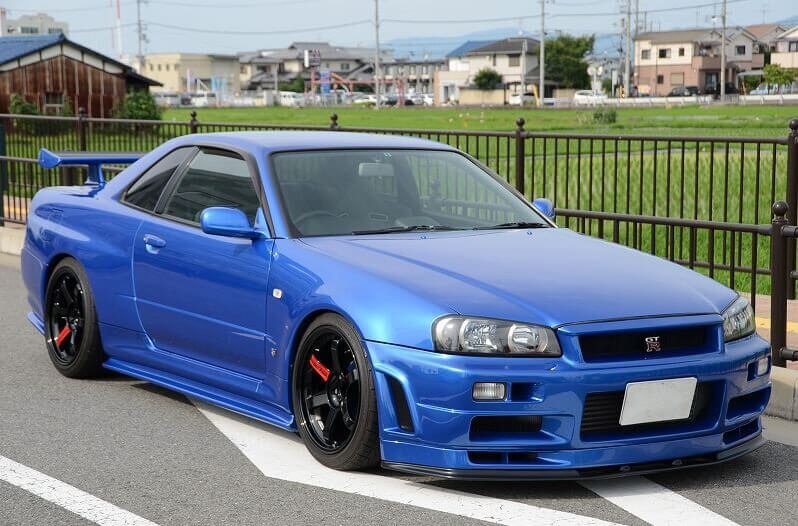At any given time, there are at least 100,000 U.S. troops stationed overseas. The bulk of these are in Europe or Asia with Germany and Japan making up the most at over 30,000 service members each, and South Korea bringing up a close third at almost 25,000.
We are talking exclusively about non-war zones here; places where troops go to work just as they would stateside. They rent and buy houses, live in the community, and of course buy cars and motorcycles. The problem comes when their time abroad comes to an end and they have to go back stateside.
The question is: as a military service member stationed abroad, how do you get your car stateside legally? And once it’s here, how can you get it titled and registered? Let’s find out.
Overview: Safety First
By “safety first,” we mean safety inspections first. Why? Who knows, really. Japan, South Korea, and all of Western Europe are top-notch when it comes to automobiles - their vehicles are as safe as they come.
But rules are rules.
All imported vehicles have a laundry list of standards they must meet before they can enter the country. These include:
So, regardless of what state you plan to title an import in, it already has a significant barrier to entry before you ever put it on a boat.
The very first thing you need to check on is to see if it is a conforming vehicle. Anyone looking to import a vehicle stateside first must file an HS-7 Declaration Form. This is done to declare the reason for the vehicle’s importation into the states. Caveat: this is for vehicles that have not already been identified as conforming to U.S. or Canadian standards, as many of the cars found abroad will not have.
The moral of this story is that you must make sure all of your paperwork is completely squared away well before you put that vehicle on a boat.
Speaking from experience as a former government employee of nearly two decades, you should not only research it all online and square it away with the posted guidelines, but then you should also follow up with a contact in the NHTSA and CBP. Get it in writing that all of your paperwork is in order and complete before you load up because they will not hesitate to deny your vehicle at the entrance.
Also, the EPA takes a stake in the process, too. The official overview of import requirements for both vehicles and engines is here.
For this instance, we are referencing non-U.S. versions of vehicles; U.S. versions are already made to American specs.
However, you will need to do some work here. Some non-U.S. versions are proven to be identical to U.S. versions, so they can be exempted. But this is not automatic; you have to check into it first. The exemption has to be requested and approved. Do not make any assumptions.
Dealing with CBP
The process of getting your vehicle overseas means making sure it complies with multiple agencies. We aren’t here to tell you what to do, but if your vehicle is not U.S. conforming or a U.S. version, or identical to a U.S. version, you should carefully consider what to do with it.
It is not an accident or coincidence that there are Lemon Lots at every military installation, and from my experience, they are especially well-stocked at OCONUS installations. To be frank, it is usually easier to just buy a vehicle overseas, drive it around for the duration of your orders, and then ditch it before you leave. This is not legal advice, just an observation from a lot of years in and around the DoD.
That being said, if you cannot keep your hands off of a little Italian sportster or German sedan, there is hope but you have to do your research. If you don’t, you might end up figuring out what to do with it after it’s been denied entry.
Importing from Europe
Like we’ve said, your first step is to establish eligibility. If the vehicle isn’t eligible, don’t bother doing anything besides deciding how to sell it. We’re sorry for the abrasive advice, but it’s valid advice.
Once it’s eligible, start figuring out what paperwork you need. For service members, check with your local traffic management office because they will be your focal point for all shipping issues.
Traffic management should be able to provide you a port where your vehicle will depart and where it will arrive stateside. If you are PCSing, it will be a port closest to your next duty station (probably). If you are separating or retiring, it is the port of your choice.
Importing from Asia
The process for departing service members from Japan won’t be any different than in Europe. Thankfully for you guys in uniform, traffic management does all the heavy lifting that a civilian often has to coordinate on their own.
However, if you don’t provide adequate information or your vehicle isn’t eligible, you still can’t get it into the U.S.
Are Import Duties (Taxes) Due?
It all depends on the situation. The best way to find out is to use a calculator to see. If you can’t get a good calculation on duties, you may need to contact CBP to see what is owed.
Again, service members should observe their checklists and take their questions to traffic management first. They are excellent with this stuff because they deal with thousands of movements per year. Whatever your question is, they’ve probably dealt with it.
How Do I Title It?
We’ve talked a lot about getting it here, but how about when you are here. What are you going to do with it once it’s here?
Well, you could try to work with your local DMV but the number of people who have ever walked up and asked that question is probably pretty small. In our experience, you're more likely to get a blank stare than a title and a license plate.
Not all DMVs will want to touch an imported car, which is why here at Dirt Legal we don’t work with all states. We cherry-pick working with a select few states to get your car titled. As part of our pledge to provide you with world-class service, a free license plate/registration is included with our program. Here's how it works.
Important Notes
If the vehicle is a 2008 or newer, a VIN inspection is required. This is not the same thing as our VIN check; a VIN inspection is conducted by the DMV or by your local police department. However, if you are concerned about what they might find, you should run a VIN check on it to see what is in the history of your VIN.
To qualify for our import program, you only need a bill of sale.
If the vehicle is a 2007 or older, you will owe 6% sales tax which is based on the NADA value or the purchase price.
At Dirt Legal, we’ll handle the heavy lifting so you can get your beloved import back on the road. All we need from you are to follow these steps;
Select your vehicle year and registration options: This will determine the price for us to title your vehicle.
Checkout: Click Add to Cart and complete the checkout process. You’ll receive an email confirmation with your receipt and order number.
Vehicle information: Fill out the vehicle info form that appears after you check out. As long as you have a bill of sale and a Vehicle Identification Number (VIN), we can title any vehicle regardless of country of origin.
Documents: Keep an eye on your mailbox. We’ll send you a checklist for the materials we need to handle the service on your behalf, including your bill of sale, copy of ID, notarized power of attorney, and sales tax (if not already paid)
Send it in: Mail everything to us using the pre-paid envelope we’ve provided to make it as easy as possible for you. Congrats, your part’s done! Now simply wait to receive your new vehicle ownership document in the mail!
Once the process is completed and approved, you will have a tag and transferable registration. Now, it is important to state that not all states will accept a transferable registration in lieu of a title. We have been hearing that Florida is cracking down on transferable registrations and will require a paper title to transfer.
This isn’t the end of the world, though. Vermont is totally open to residents of any state registering cars there. If you are planning to only use this service as a gateway to get into your state and tag locally, you should do some background work to make sure you’ll be able to do it without issue. But again, it’s a non-issue if you feel like leaving it tagged and registered in Vermont; we offer an online renewal service that makes it super easy to keep your vehicle tagged in Vermont and always have current registration.
Wrapping Up
Registering and titling your imported car can be a real headache. Thankfully, we have a solution. You are a few clicks away from getting a fresh title or transferable registration to get your imported car off the boat and on the road!
There are a few key items, though: we cannot guarantee this service if the car doesn’t pass federal import requirements, so please do your research before you ever commit to shipping your car. If it isn’t on the list of approved cars or exempt, it is better to sell the car off while you’re overseas then deal with the nightmare of it being rejected on the dock. Or, if it's close to 25 years old and you have the means, you could store the car abroad and import it once it's 25 years old. People do that with a certain old Nissan all the time.
Tl;dr: make sure your vehicle is approved or exempt. Go through our titling service for imports. Fill out all required paperwork. If you want to transfer it to your home state, make sure they accept transferable registrations. If not, we offer online registration renewals. Then hit the road in your freshly imported machine, and not only will very few people realize what's been done to get it here, they won't believe how easy it was with the help of Dirt Legal.












At any given time, there are at least 100,000 U.S. troops stationed overseas. They rent and buy houses, live in the community, and of course buy cars and motorcycles. The problem comes when their time abroad comes to an end and they have to go back stateside.
The question is: as a military service member stationed abroad, how do you get your car stateside legally?